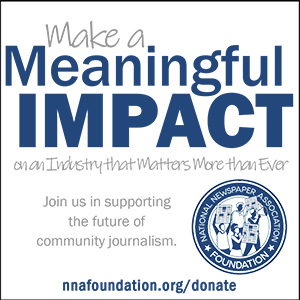‘When’ and ‘why’ we need to hear 911 calls
Dec 5, 2013
By Gene Policinski
Inside the First Amendment — Dec. 5, 2013
The word “restraint” and the First Amendment usually exist in uneasy tension.
The 45 words of the First Amendment don’t include it. The Pentagon Papers case in 1971 settled the issue of “prior restraint” by the government on what the press may publish: Nothing doing.
Many critics of the news media slam news outlets for a lack of it, from graphic TV images beamed “live” from car chases to un-restrained “paparazzi” photographers stalking celebrities. And in the digital age, whole new ethical controversies have arisen over images being captured and distributed via the ubiquitous presence of cell phone cameras.
But consider the news decisions made — at least thus far — on the release of 911 tapes from the Sandy Hook Elementary shootings in Newtown, Conn., one year ago. The violence was real, and callers were facing the horror of a shooter who eventually would kill 20 students and six educators.
Seven tapes of 911 calls from Sandy Hook teachers and staff at were released at 2 p.m. ET Wednesday, Dec. 4, under a court order following a request by The Associated Press, which had sought the tapes’ disclosure since the day of the shooting.
There is a difference between having public access to such calls and the public broadcast or online posting of the calls themselves.
There are strong First Amendment reasons for disclosure of 911 calls — from the plain fact that in many cases such recordings are public records in the first place, to holding police and other emergency responders accountable for their response, to in some cases debunking conspiracy theories or defusing wild rumors.
The First Amendment also protects news operations from government interference what they do with 911 tapes. Fox News was first cable outlet to air Newtown 911 audio clips, about one hour after their release, but only used short excerpts. CNN first report featured a reporter describing the audio. ABC and NBC said they would not use the audio, while CBS used some audio segments, but nothing in which gunshots could be heard.
Caution of a different sort was at play online: A variety of newspaper web sites, online news reports and blogs provided “clickable” audio replays of all seven recordings — but generally with stories or stand-alone warnings about the graphic content. Clearly, the idea that online users could make their own decisions about hearing the tapes, as opposed to TV viewers or radio listeners who could not, was in play.
Editors have been faced with ethical calls on tragic imagery or audio since the invention of those mediums.
In 1911, many news outlets used photos of many of the 146 people — mainly young women — who died in the Triangle Shirtwaist Factory fire. There was the anguished voice in 1937 of WLS radio reporter Herbert Morrison, including his memorable phrase “Oh, the humanity ...” as the dirigible Hindenburg burst in flames.
Newspapers and newsreels in the 1930s and 1940s did not show President Franklin Roosevelt being carried or using a wheelchair or crutches. Famously, Life magazine withheld one frame — Frame 313 — of the 26-second “Zapruder film” from Nov. 22, 1963 because it graphically showed the impact of a bullet on President John F. Kennedy’s head.
Much of the most-graphic footage of the terror attacks in 2001 on the World Trade Center — even if broadcast “live” at the time — has not been used in later reporting around the annual anniversaries of the tragedy. More recently, a disclosed 911 call in which a struggle and a gunshot could be heard proved significant in the trial and national discussion over the Trayvon Martin shooting.
In the absence of government regulations, a free press properly is left to make their own decisions for their own reasons. But in at least eight states, according to a 2012 report by the First Amendment Center, legislatures have enacted bans or severe limits on release of such calls — with proposals in a number of other states for a ban or transcript-only disclosure.
There are professional guidelines on airing 911 tapes, including those produced by the Radio Television Digital News Association. In sum, the RTDNA guidelines call on journalists to consider whether using the actual audio is necessary for a complete and accurate report, to respectfully frame use of the sound if it is used, and to consider how best to explain decisions once made.
A global controversy over satirical cartoons depicting Islam’s Muhammad a few years ago were fueled in part when European newspapers republished the images in defiance of blasphemy laws in their nations. In the U.S., virtually no news outlets published the cartoons, opting for descriptions in words — making what some editors said was a routine call on material that might offend even a small portion of their readers.
The difference then — and on Wednesday, with the Newtown 911 tapes — is that a free media makes a journalistic decision, with no need to show government what the news media could do instead of what editors independently felt they should do.
| Gene Policinski is chief operating officer of the Newseum Institute and senior vice president of the Institute’s First Amendment Center. He can be reached at gpolicinski@newseum.org. |







